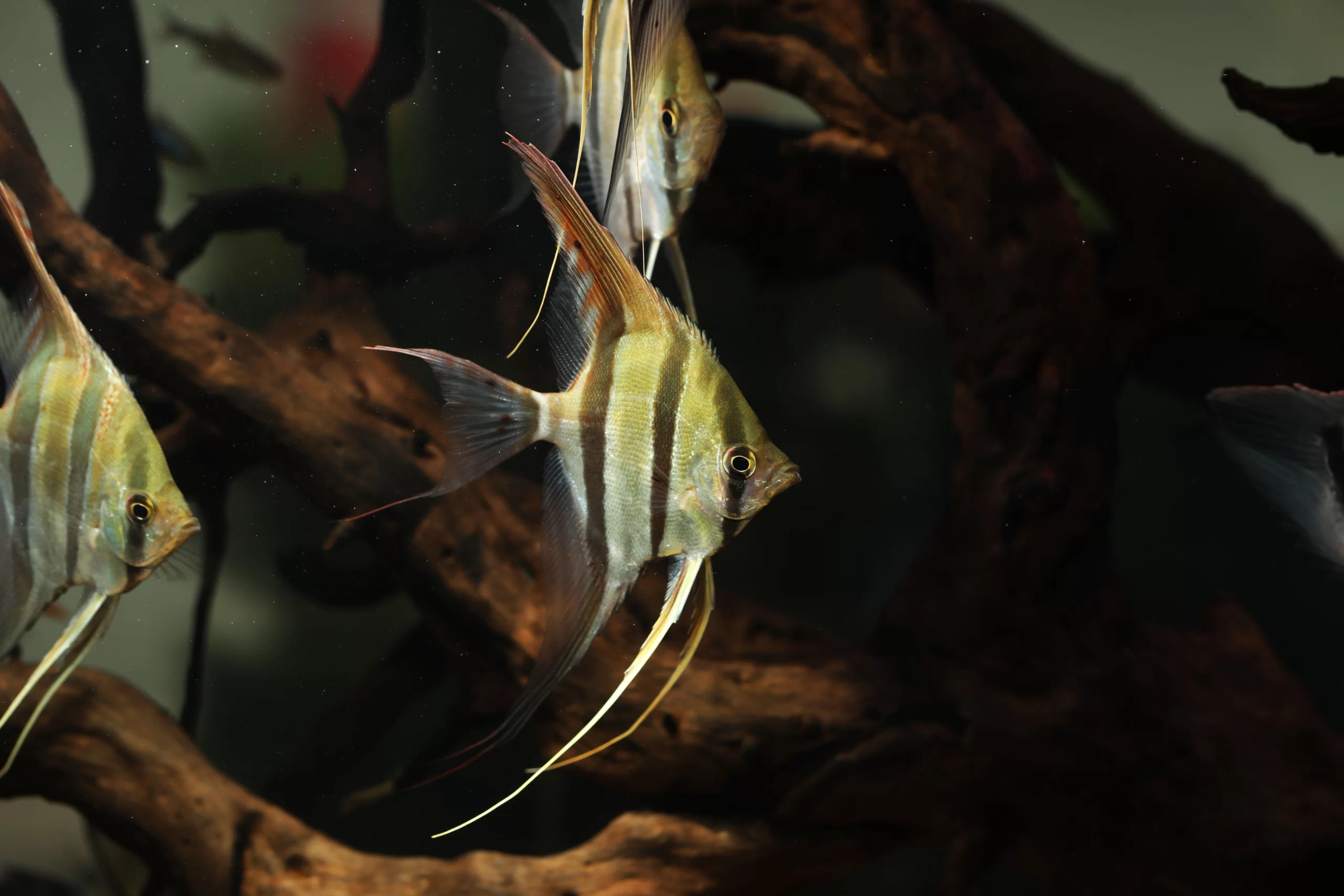

Angelfish (Pterophyllum scalare)
Angelfish are probably one of the best known fish for larger aquariums. With their unusual appearance and distinct coloration and patterning, they immediately catch the eye in any tank. These fish can be found in almost every pet store due to their popularity.
Water parameters for angelfish
- PH value: 5.5 – 7.5
- GH (total hardness): 5° – 18° dGH
- KH (carbonate hardness): 0° – 10° dKH
- Temperature: 24° – 30°C
Appearance
Angelfish are very impressive animals. The name angelfish comes from the long fins, which are located on the underside of the animal. Also the pointed head is the reason for the name. These fish come in a wide variety of colors and patterns. So there are specimens in yellow, blue, white and also multicolored animal in orange-black-white and orange-white. However, many of these fish are monochromatic with four horizontal stripes across the body. Through selective breeding, however, there are also monochromatic, marbled and animals with colors on a certain area. Given adequate aquarium size and food, sailfin can grow up to 25 cm in height and 15 cm in length.
Breeding
Breeding angelfish is not very simple. First of all, there must be a place for the eggs. Large leaves of plants are particularly suitable for this. But also so-called spawning cones can be used. Then a pair ready to spawn must be found, which is not always the case. After mating, the eggs are laid on a selected object. The parents then engage in brood care. It may be that the fish eat some eggs. This is done to protect other eggs from becoming fungus and is therefore not a bad thing. Therefore, even the eggs should only be removed from the community aquarium if the parents can be moved with them. After a few days the fry start to swim. From then on they have to be fed. This must be special food so that the young animals can eat it.
Keeping angelfish
The keeping of angelfish is not that easy. Ideally you keep one pair per aquarium. However, since you do not know from the beginning which fish will form a pair, you should either observe the fish at the dealer to see if you can find a pair or the aquarium is so large that there is enough space for several angelfish. The tank should be at least 150 x 60 x 60 cm anyway. The substrate should be rather fine. Therefore sand and also small granules are suitable. In addition, there should be some plants, which grow up to the water surface, as retreat possibilities in the tank. Also floating plants with long roots are well suited for such an aquarium. Hiding places by stones and roots should also not be missing. In addition, too strong a current should be prevented. Feeding must be at least 50% live or frozen food. A diet of only dry food is not recommended.